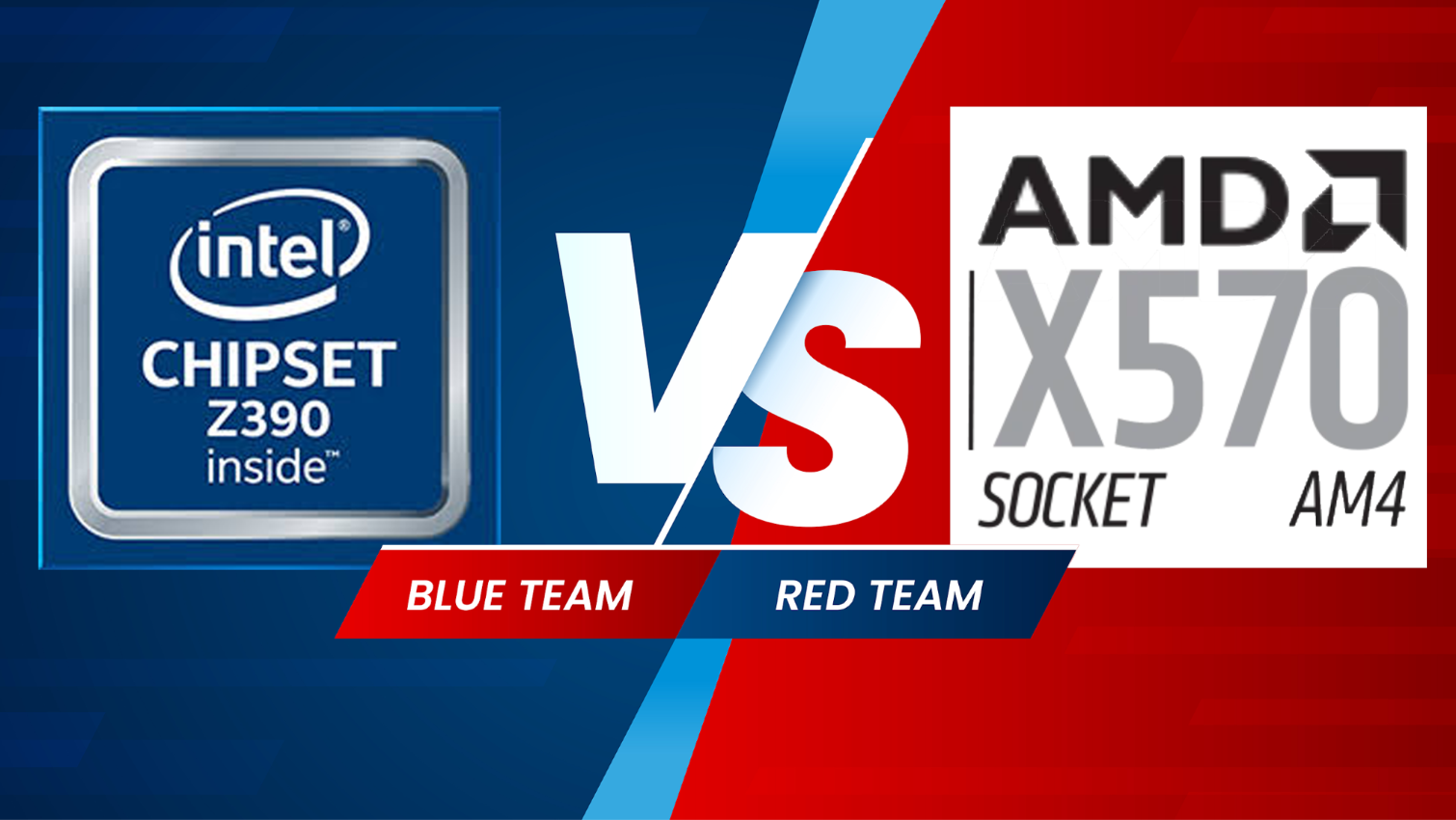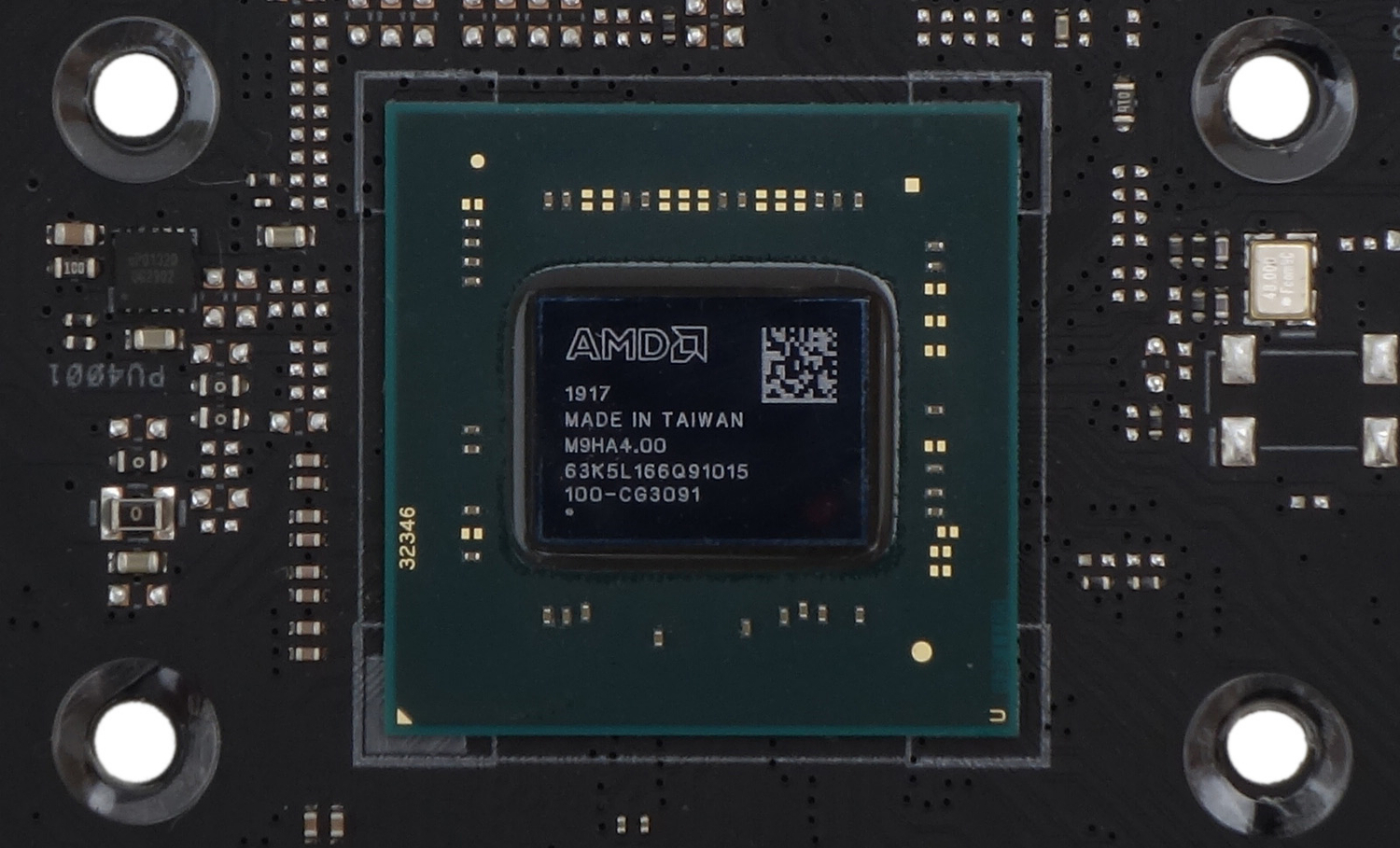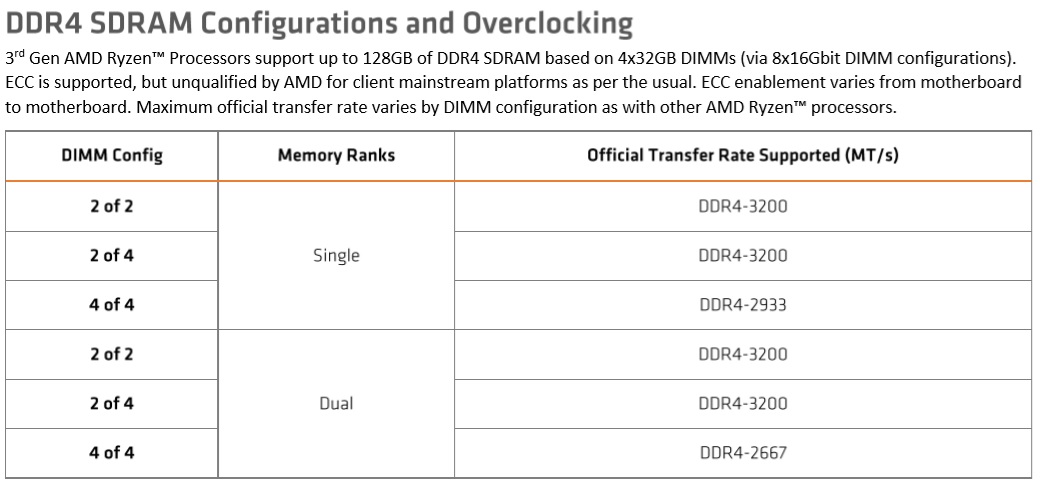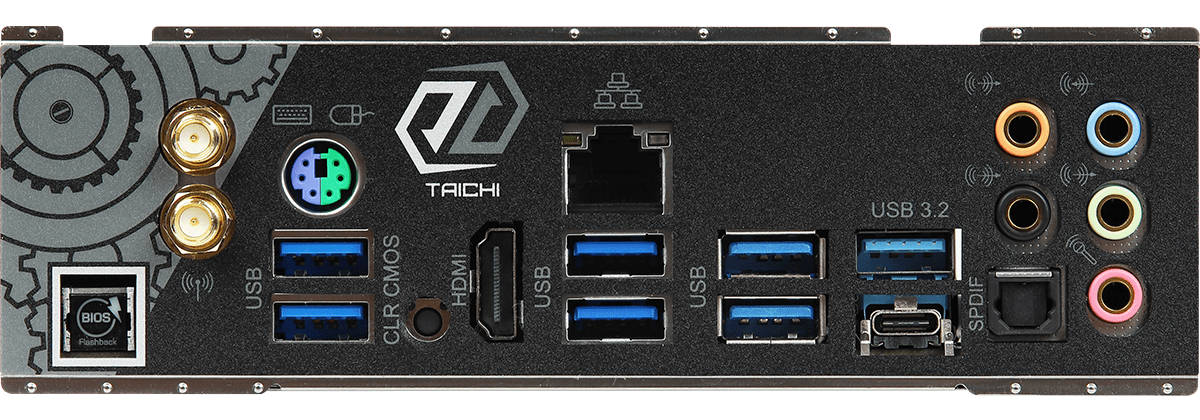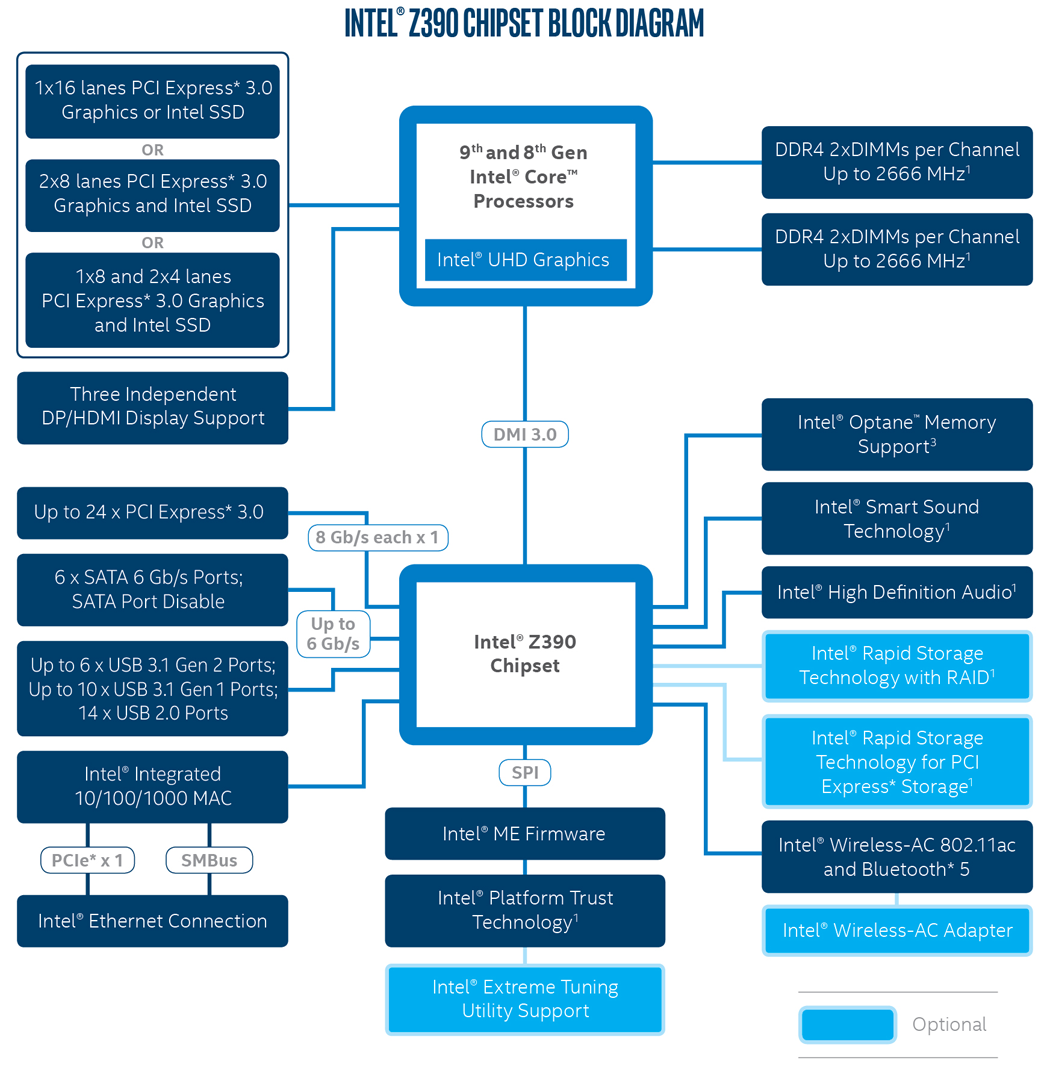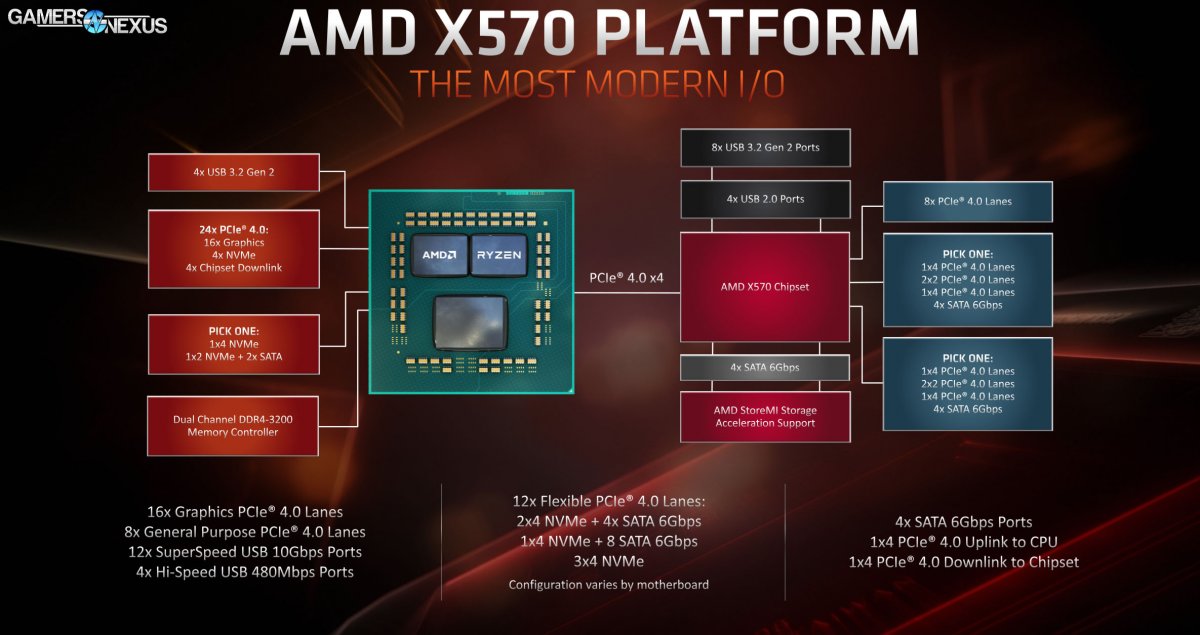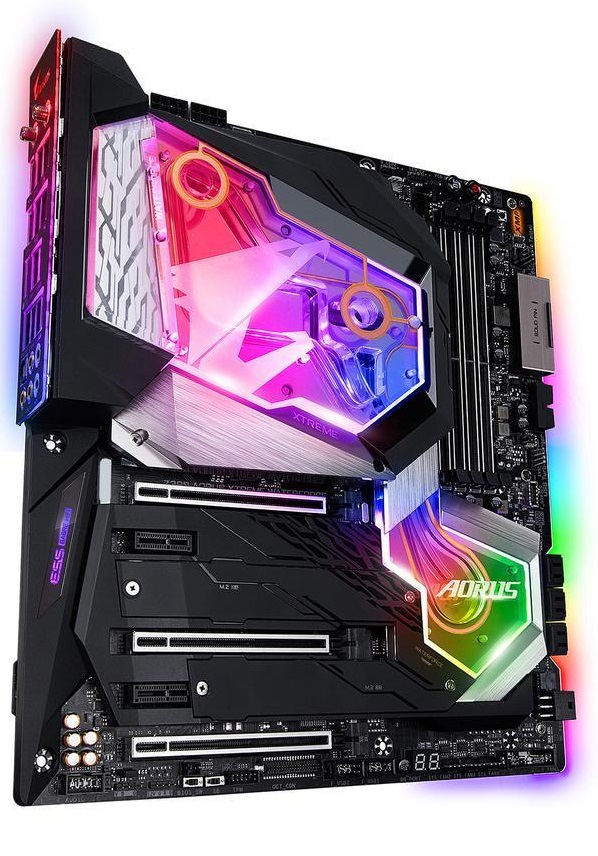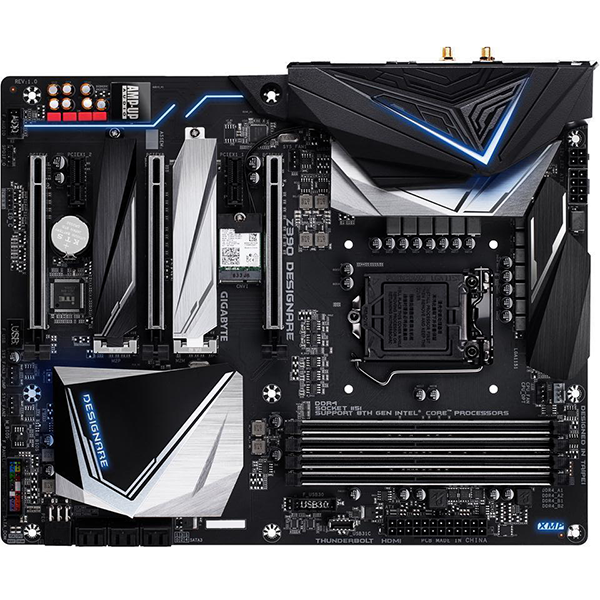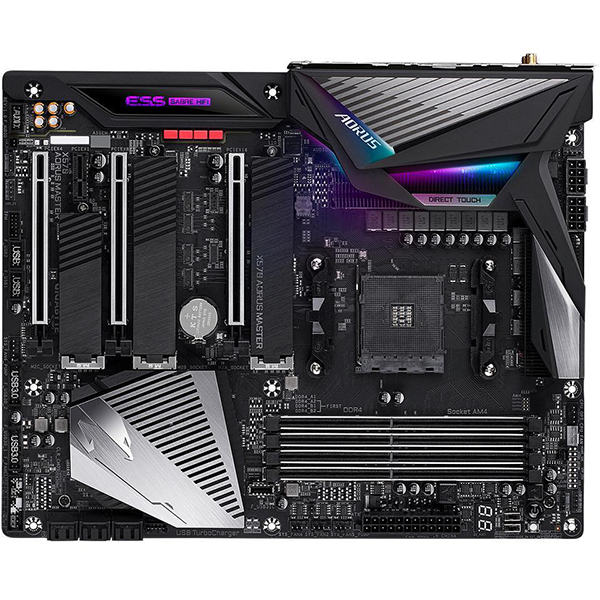AMD X570 vs. Intel Z390 Chipset: Which Mainstream Platform Is Better?
We’ve pitted AMD’s X470 chipset against Intel’s Z390 in the past, covering CPU and memory support, overclocking ability, I/O interface technology, storage options and technology, as well as motherboard selection and pricing to determine a ‘winner’ between the competing platforms. But now that AMD’s Ryzen 3000 CPUs have arrived, alongside a new X570, it’s time for a chipset rematch. AMD’s PCIe 4.0-packing X570 is going up against Intel’s tried-and-true Z390.
The new X570 southbridge is designed to handle all Ryzen 3000 series SKUs, from the upcoming Ryzen 9 3950X and its 16-core 24-thread configuration, down to the four-core Ryzen 3 2200G APU, as well as backward support for the Ryzen 2000 series. At a high level, motherboards with the new AMD chipset bring generally more robust power delivery and PCIe 4.0 support, as well as native USB 3.1 Gen2 support, to entice an upgrade from older motherboards and chipsets.
The Z390 chipset and motherboard ecosystem has been on the market for nearly a year. It was released with the intent to support the latest Coffee Lake processors, like the flagship Core i9-9900K and its 8-core 16-thread configuration. The platform supports both 8th and 9th generation CPUs for some backward compatibility, PCIe 3.0, and brings native USB 3.1 Gen2 support, among other features.
When builders or full-system buyers are looking to purchase a motherboard using flagship chipsets, chances are they’re considering all the features it has to offer, as well as overclocking options. This means you’ll want the latest USB and memory support, storage options, I/O, as well as a broad selection of boards to choose from. Below we’ll take a look at the current environment for both platforms and find out if AMD can stage a come-from-behind win, or if Intel still rules the high-end chipset roost.
CPU Support
Intel’s Z390 chipset supports both 8th and 9th generation Core processors, amounting to quite a number of compatible CPUs. Chips range from the Celeron 49xx and Pentium Gold G5xxx series to i3, i5, and i7, SKUs up to Core i9-9900K/KF processors. In all, Z390 supports about 30 CPUs from dual-core models up to eight cores and 16 threads. Prices range from around $50 up to $488 (MSRP) for these CPUs.
The Z390 chipset uses the LGA 1151 v2 socket introduced with 8th generation Core CPUs and earlier 300-series chipsets. While the socket layout is the same as the previous generation (Z170/Z270 LGA 1151 v1) there are subtle changes in the power delivery specifications which made Z390 boards incompatible with 6th and 7th generation processors, although there are unofficial ways around this in some cases.
On the AMD side, X570 continues to use the AM4 socket and touts backward compatibility for 2nd-gen (Zen+) Ryzen 2000 series CPUs. First-gen Ryzen CPUs are not supported, at least officially. The processors supported include Ryzen 3, 5, 7, and 9 series up to the flagship Ryzen 9 3950x which will be released in September 2019. This also includes the Pro models and Athlon 2xx series GE processors with integrated Radeon Vega 2 graphics.
Get Tom's Hardware's best news and in-depth reviews, straight to your inbox.
In all, the X570 chipset supports around 35 CPUs ranging from dual-core, four-thread parts, up to a soon-to-be-released 16-core 32-thread monster blurring the lines between HEDT and mainstream. Prices on these CPUs range from $60 up to $749 (MSRP).
Winner: AMD
This is a tough call as both the X570 and Z390 support CPUs one generation back, so compatibility is in some ways the same. But AMD has more cores and threads available on this mainstream platform than the Z390 chipset allows. With that in mind, AMD gets the nod on CPU support.
Memory Support
The X570 platform carries over its dual-channel capabilities from X470, but brings faster base memory speeds, DDR4-3200 (up from DDR4-2933 on Zen and Zen+), along with promises from AMD of faster speeds and better compatibility. While time will tell on the compatibility part, AMD themselves have suggested a sweet spot for memory around DDR4-3600 which is a good sign for higher speeds overall.
Though it is still early in the life cycle, we’ve seen most users settle around DDR4-3600 MHz area just as AMD has said. After 3600, the memory divider then automatically splits to a 2:1 ratio, which increases latency.
On the extreme cooling front, Zen 2 was able to reach over DDR4-5000 MHz using liquid nitrogen. This bodes well for the platform, in particular, as it matures. Perhaps separating the memory controller from the cores has improved the situation for team red.
When taking a look at X570 based motherboards, the majority say they support, with overclocking, speeds over DDR4-4000. Many boards have specific multipliers listed as “OC” speeds to DDR4-4400. While this doesn’t mean it will work with every setup, it is a lot more than we have seen in the past from AMD.
On the Intel Z390 side of things, memory speed and support has been better than the AMD camp for several generations. A common joke is that you can plug a potato into your Intel-platform RAM slots and it will work--ed’s note: This definitely won’t work and we’re not going to help clean the spud crumbs out of your DIMM slots. Jokes aside, generally the Intel platform is more accepting of a greater variety of modules.
The Core i9-9900K and Z390 platform have a base specification of DDR4-2666. While this official number is lower than the recently released AMD platform, DDR4-3200 MHz kits abound and deliver a good price to performance ratio. But it isn’t uncommon to see Z390 running DDR4-3600 memory speeds, either.
Extreme overclocking on this platform has also broken the DDR4-5000 mark. In fact, the current (as of this writing) record is DDR4-5886 (2943 MHz actual) using a Z390 Mini-ITX board and liquid nitrogen for cooling.
Winner: Intel
AMD has made large strides in memory compatibility and speeds, raising their base specification up as well as improving compatibility with memory kits. That said, compatibility is still a bit finicky. And Intel, in general, supports more kits and faster speeds.
Overclocking Ability
When using the Z390-based boards and unlocked “K” SKU CPUs (the only Intel SKUs which overclock), the motherboard will not be the limit, at least at stock speeds. The majority of Z390 based boards and their power delivery subsystems are capable of driving the flagship Core i9-9990K processor, and many will allow for some overclocking. That said, as we’ve seen from several of our Z390 motherboard reviews, if you plan on pushing a Core i9 processor to its limits, you’ll need a high-end Z390 board with good cooling on the VRMs and elsewhere--or at least some active cooling moving air over them--or else you’re going to hit a thermal limit pretty fast.
Automated overclocking on the AMD side is handled by the motherboard, which the company calls Precision Boost Overdrive. PBO is designed to boost the clock speed so long as it stays within three parameters, Package Power Tracking, Thermal design Current, and Electrical Design Current. PBO currently doesn’t boost beyond the boost clock, but it does help maintain boost clocks for a longer period of time and more frequently. And while there are some improvements when sticking to what the motherboard does, manual overclocking is generally more efficient and can run cooler (boards tend to use more voltage than needed when on auto - from both camps).
From base clock to final overclock, the Intel CPUs can surpass any Ryzen-based processor with relative ease. Though to be fair, this isn’t really a board limitation so much as it is an architectural or thermal limit on the AMD side. The Z390 platform and a board designed for extreme overclocking can take an i9-9990K well past 7 GHz when using extreme cooling methods such as liquid nitrogen, whereas Zen 2 CPUs so far haven’t gone much past 5.5 GHz using the same extreme cooling methods.
AMD overclocking is far-less limited overall, with multiplier overclocking capabilities across the whole line of CPUs. But Ryzen-based CPUs have always had more of a hard ceiling compared to Intel, with base clock to overclock range typically much smaller. For example, the 3900X has a base clock of 3.8 GHz, but most reviewers using decent-sized AIO coolers have topped out around 4.3 GHz, for a difference of around 500 Mhz. Intel systems can double that and then some on the Core i9-9900K and other unlocked CPUs--provided you wind up with a favorable chip.
Winner: None
Both chipsets can overclock their respective CPUs to their thermal limits. In most cases, the chipset doesn’t really get in the way of the CPU, but thermals will. The X570 platform can handle AMD’s entire product stack at stock, and it seems that the 3900X doesn’t have an issue when overclocked. Time will tell if the 16-core 3950X fares as well. The Z390 chipset can also overclock the flagship CPU without getting in the way, although you’ll need a board with robust cooling to push the Core i9 to its maximum clocks for sustained periods. For now we’re calling this a wash, since we don’t yet know how well budget-priced X570 boards will handle the upcoming Ryzen 9 3950X. However, if we were to include what the CPUs can do themselves, the nod would go to Intel due to how much higher its unlocked CPUs are able to overclock.
I/O Interfaces
Intel’s Z390 chipset offers users the latest and greatest connectivity that the 3-series chipsets have to offer. This includes native Bluetooth 5 and CNVi-based Wireless-AC reaching speeds of up to 1.73 Gbps depending on the Wi-Fi module used. But note that many boards do not include a module even though the chipset natively supports it.
USB connectivity from the chipset includes six USB 3.1 Gen2 (10 Gbps), 10 USB 3.1 Gen1 (5 Gbps) and 14 USB 2.0 ports. Additionally, the platform supports six SATA3 (6 Gbps) ports, Intel Optane Memory support, and Intel RST.
The majority of Z390 boards also include display outputs -- typically in HDMI or DisplayPort form -- which pulls from the integrated GPU on the chip. On the AMD side, many boards also have different video ports for use with their APUs.
AMD’s X570 chipset, for the most part, also offers the latest and greatest connectivity. On the USB front, it includes up to eight USB 3.1 Gen2 and as well as four USB 3.1 Gen1 ports. The overall count is less than Intel’s, but AMD has two more USB 3.1 Gen 2 ports. On the storage side, X570 natively supports eight SATA3 (6 Gbps) ports.
The big change with X570 is the update to PCIe 4.0. This feature doubles the available bandwidth for the GPU and anything else, like the interconnect between the chipset and CPU. While this doesn’t tend to help video card performance at this time (even the mighty RTX 2080 Ti doesn’t saturate PCIe 3.0 bandwidth), it does help with the new PCIe 4.0 M.2 SSDs, doubling their potential sequential performance. Intel Z390, on the other hand, uses PCIe 3.0, so PCIe 3.0 x4 NVMe users are still limited to around 3,500 MBps.
For content creators and those who can use the extra speed, this is a welcome advancement. That said, if you can’t use the bandwidth, there isn’t much point for the feature today. We’ll have to wait and see if more powerful GPUs arrive in the next few years that can take advantage of the pipeline, as well as what other devices arrive to make use of the impressive PCIe 4.0 bandwidth.
Winner: Tie
For IO, we think the platforms are a tie. PCIe 4.0 isn’t likely to utilized today by the vast majority of builders and buyers, and judging from what we’ve seen from early PCIe 4.0- based drives, there’s room for improvement, with sequential speeds being the primary benefit. But that's due to continuing SSD controller development, and will improve as more vendors push out new drives. Those wider PCIe 4.0 pipes will benefit other types of devices, too, such as the link between the chipset and the processor, thus offering the most contention-free throughput available for devices hanging off the chipset. Especially RAID volumes. That said, some won't want or need PCIe 4.0, and might prefer some of Intel's available trimmings. There is plenty of modern USB connectivity included on the Z390 side. And partially integrated Wi-Fi, while not a deal-breaker, can save a little money on board costs. But of course Wi-Fi isn’t a feature that everyone will prioritize.
Storage Options and Technology
For storage options, X570 brings with it the same number of SATA3 ports, eight, as the X470 boards did (B450 supported six). These ports support RAID 0 (striped), 1 (mirrored) and 10 (striped with mirroring) modes. The main feature here is the PCIe 4.0 M.2 slots afforded by the platform, which we mentioned in the previous section. Again, today this feature only benefits those who can utilize higher sequential read and write speeds.
AMD’s StoreMI technology, which uses a small SSD and RAM to speed up/cache slower mechanical hard drives, makes its way to X570 as well. StoreMI combines an SSD and mechanical drive so the system sees it as one large volume. This feature works roughly similar to Intel’s RST by storing frequently accessed files on the faster ‘drive.’ When that task is called upon, it will be accessed from the ‘faster’ (SSD) portion of the drive. StoreMI also includes a RAM caching feature where users can allocate up to 2GB system memory to accelerate system speeds.
Intel’s Z390 chipset supports six SATA3 ports natively, as well as RAID 0, 1, 5 (striping with parity) and 10 on those ports. Z390 also includes Intel RST functionality as well as the Optane Memory support to speed up slower mechanical drives.
Both platforms can handle up to three M.2 based drives. But on the Intel side you’ll see more port sharing due to the limited bandwidth available from the chipset. AMD’s X570 and its newfound bandwidth supports more PCIe-based M.2 drives and with faster speeds.
Winner: AMD
Since X570 landed with more bandwidth, motherboard manufacturers can place more PCIe-based M.2 slots on board. Many won’t not benefit from the added bandwidth for now, but with the prices of SSDs dropping lately, many users are looking into using multiple NVMe drives without compromising on speed. In most cases, only AMD’s platform can accomplish this without the use of PCIe riser cards.
Motherboard Selection and Pricing
Available motherboards and pricing play an important role in your system. Users need to balance their budget with the features they want or need. And for the overclocker, a board designed to handle the additional stresses (as in the power delivery) is key. Both Z390 and X570 include boards of all shapes and sizes in their lineups, from Mini-ITX up to E-ATX, so there is something for everyone on that front.
On the AMD X570 side, there are over 30 boards available at the time of this writing from the five major AIBs (Asrock, Asus, Biostar, Gigabyte and MSI). X570-based motherboards add PCIe 4.0 support (when using a Zen 2 CPU) and generally have a more robust power delivery system to support the 12-core, 24-thread Ryzen 9 3900X, as well as the monster 16-core Ryzen 9 3950X hitting the scene with even more cores and threads.
With these updates, the X570 motherboards do come with an overall higher price point. A quick glance to Newegg shows the least-expensive board, an ASRock X570 Phantom Gaming 4, is priced at $155, with the most-expensive boards currently available, the Gigabyte X570 Aorus Xtreme (plus the MSI MEG X570 Godlike and Asus ROG Crosshair VIII) all priced at $700. So X570 pricing starts off reasonable, but the meat of this lineup is well into the $200+ range, approaching $300. And let’s not forget the yet-to-be-released ASRock X570 Aqua, a water-cooled motherboard for a projected $1000 price point.
When looking at the more mature Z390 chipset, there are nearly 60 motherboards available with prices ranging from $99 with the Gigabyte Z390 UD up to the $900 Gigabyte Z390 Aorus Extreme Waterforce. On the surface, pricing seems similar, but when looking at things in a bit more detail, you’ll find around 29 of those boards are under $200. Another 14 boards are under $300. Newegg has three X570 motherboards under $200, and seven more under $300.
AMD’s price difference on CPUs, when comparing similar core counts, is a major selling point. The company has effectively won the price-to-performance argument, at least for now. However, with the cost of the X570 boards, that value proposition dips a bit lower. You can of course opt for a lower-priced X470 board and mostly just lose PCIe 4.0 support, but as this is a faceoff specifically between X570 and Z390, the older chipset doesn’t factor in here.
It's also important to note that X570 boards generally come with some form of active cooling on the chipset. Although there are a few high-end passively cooled motherboards, most have a small fan that adds at least some noise to your build.
Winner: Intel
Not only does Intel have more choices (even if part of that reason is that its chipset has been out for a lot longer) but on average, the Intel motherboards are less expensive. You can find a very capable Z390 board for under $200 that has the necessary features as well as the robust power delivery circuitry to support overclocking the flagship i9-9900K CPU.
Bottom Line
Just tallying up the scores, the two platforms tie, but each platform has its own appeal. Intel wins in memory support, motherboard selection and price. AMD gets the nod in CPU support and storage options and technology. They tied in overclocking and I/O accommodations.
In the end, it was close between the chipsets. Both offer the user the latest in connectivity with AMD on the bleeding edge using PCIe 4.0 where Intel is using PCIe 3.0. Both chipsets officially support two CPU generations. While memory support and compatibility have improved with Zen 2, the platform is still new and will likely see improvement over time. Compare that to Intel where memory speeds, support, and compatibility are better.
Both the X570 and Z390 chipsets allow for overclocking and get the split in that category. But if you consider the CPU which goes inside, The Intel K processors overclock quite a bit more from their base clocks comparatively.
Both camps include a slew of I/O technology including USB 3.1 Gen2 connectivity to the boards and video outputs where needed. PCIe 4.0 is only a plus if you can utilize the bandwidth which is more useful on the storage side of things and raising the glass ceiling PCIe 3.0 x4 has. Only Intel has integrated Wi-Fi capability, but the board must include the M.2 module or they can be purchased separately.
Motherboard selection, typically a non-issue, has to be a consideration now when comparing platforms due to AMD’s beefy chips as well as its overall pricing going up quite a bit. With pricing starting out and peaking lower, the value aspect can more readily be on the Intel side of things. With AMD back in the game on the performance side, as consumers, we are in a good position compared to a couple of years back before Zen CPUs hit the scene.
Overall, the goal of this article was to compare the latest chipsets from both camps and try to find a winner. The difference isn’t much and comes down to users understanding what features they need, versus want, and choose from there.
| Round | Intel Z390 | AMD X570 |
| CPU Support | Row 1 - Cell 1 | ✗ |
| Memory Support | ✗ | Row 2 - Cell 2 |
| Overclocking Advantages | ✗ | ✗ |
| I/O Interface Technology | ✗ | ✗ |
| Storage Options and Technology | Row 5 - Cell 1 | ✗ |
| Motherboard Selection and Price | ✗ | Row 6 - Cell 2 |
| Total | 4 | 4 |
MORE: Best Motherboards
MORE: How To Choose A Motherboard
MORE: All Motherboard Content

Joe Shields is a staff writer at Tom’s Hardware. He reviews motherboards and PC components.
-
TCA_ChinChin I'm so baffled how you can possibly give I/O as a tie when AMD has PCIE 4.0, even if many storage devices aren't on that standard yet. Also I think affordability should be a tie? Yes there are 99$ z390 boards, but those are garbage in comparison. Yes you COULD put an 9900k in them, but good luck with those VRMs. Meanwhile, the cheapest x570 VRMs could handle a stock r9 3900x no problem. Just because x570 on average is higher priced doesn't mean they lose out on value. Price to PERFORMANCE is better or about the same on x570. I will concur that the average COST might be higher, but features and performance relative to price is the same (perhaps even better on x570). I would give the win to x570 on I/O and a tie on affordability. In fact, I don't even think labeling these as mainstream is correct. X570 and Z390 are enthusiast platforms. Mainstream would be B450 (B550 when it comes out), and H370/B360.Reply -
redgarl This site is continuing into the downward spiral of death. Another meaningless and biased analysis. Keep going toms, everybody left your site already. The health of the comment section is telling everything.Reply -
mitch074 I find funny that motherboard availability is used in both CPU and chipset comparisons - especially since it was rather skewed toward Intel in the former (not taking into account previous generation chipsets, not considering lower tier platforms) to give team blue two wins when it deserved a single one - and a loss.Reply
This article, by itself, is good though. -
Xajel It's all good till I saw the IO tie thing!!Reply
PCIe 4.0 isn't doing a thing now and we have to wait? Have you heard of anything called future proofing? next gen GPU's will surly have PCIe 4.0 and while we don't get any benefit from this move is really questionable. I agree with that, but PCIe 4.0 storage are already here, even though the first gen. are not native PCIe 4.0 but they do bring the good. The PCIe 4.0 also brought the additional IO benefits for the chipset and all other slots and IO. The extra IO and flexibility came because of PCIe 4.0 and you tell is it's a tie !!
Guess what, you can now have a platform that will give you PCIe 4.0 that a future product will make use of, which will make you have a better system which can handle future products with ease and not being bottlenecked by it after 1 or 2 years! -
vailr Minor omission noted: a simple Crystal Disk Mark comparison test of read/write speed of AMD 570 (& 470) vs. Intel Z390 chipset boards, when using a "best in class" PCIe 3.0 NVMe SSD, such as the Samsung 970 Pro. The opinion of some reviews have indicated that Intel may still have the better numbers.Reply -
AeroWB Wow Joe, you really need to fix this article.Reply
A tie on I/O, really? I guess you were so baffled by the question whether PCIe 4.0 is an advantage or not you were missing the other important differences.
So forget about PCIe 4.0 for now and lets have another look at those diagrams, I will lead you through the pictures so you can't go wrong again.
First look at Intel, the CPU has 2 DDR4 memory channels and 20 PCIe lanes (remember that DMI 3.0 is just a x4 PCIe 3.0 link)
Now look at AMD where the CPU has also 2 DDR4 memory channels but 24 PCIe lanes and 4 USB 3.2 ports. So AMD has 4 extra PCI-e lanes and 4 USB 3.2 ports on the CPU. This is very relevant as all IO devices like PCIe SSD's or other PCIe cards, SATA devices, USB devices etc all need to communicate with the memory (with DMA) or the CPU itself (no DMA).
So with the Intel platform all SSD's, network and other PCIe cards, USB and SATA devices will need to communicate over that single DMI 3.0 bus (which is essentially a 4x PCIe 3.0 bus) I am assuming that the full x16 PCIe 3.0 port is used for graphics, which is what you would want for a high end graphics machine.
Now compare AMD, with AMD we can connect one NVMe SSD directly to the x4 PCIe port on the CPU and therefore bypass the busy link to the chipset. Also we have 4 USB 3 ports that bypass this.
So even without PCI 4.0 AMD has an advantage on Intel in IO. With PCIe 4.0 even when not using the PCIe 4.0 bandwidth for graphics there is a good advantage, because the bandwidth to the chipset also doubles. Which is important because the can be a lot of IO connected to this chipset.
Just for fun look at the Intel chipset again. The chipset supports 24 lanes of PCIe 3.0, 6 SATA ports, 16 USB 3 ports and 14 USB 2 ports a 1Gbps network adapter and some other stuff. Now for those who don't know, this looks impressive. Until you realize all this has to go over that x4 PCIe 3.0 lane to the CPU. They did name it DMI 3.0 for a reason, so people don't realize the bottleneck this is.
One last thing. Benchmarks with fast SSD's won't show AMD's advantage here until very fast PCIe 4.0 NVMe SSD's are used. Benchmarks are always done with a single load on the system, so here that tiny DMI 3.0 bus won't saturate and everything looks fine. Now load up that machine with real life stuff, where you work on one thing while your downloading something in the background, writing to an USB drive, etc. Now add all these things up and your fast NVMe SSD will have a speedbrake applied to it due to the DMI 3.0 saturation.
So its clear I/O is a BIG WIN for AMD here. (The fact that Intel has more USB 2.0 ports and 2 more SATA ports is irrelevant and useful only for legacy stuff!) -
systemBuilder_49 If you include the B450 motherboards that support PCIe 4.0 for as little as $99 and which can handle 12-core CPUs, I think AMD would win by a mile!Reply -
randomizer ReplyXajel said:Have you heard of anything called future proofing?
PCIe 4.0 is so late that it's debatable whether it's future proof anyway. Bring on PCIe 5.0! -
DavidDisciple AMD IS the clear I/O winner here!!! It has more PCIe lanes than Intel with PCIe 4.0. Are you guys afraid of losing followers by giving a win to AMD????? You are going to lose followers anyway if you don't give reviews that give credit where credit is due and for you to say "PCIe 4.0 is so late that it's debatable whether it's future proof anyway. Bring on PCIe 5.0! " What a way to bypass the truth that AMD has something Intel does not!!!! How about this......there are no PCIe 5.0 boards out yet to even prove it exists or is going to exist. You are trying to use an argument from silence. You as a Moderator should go with the 'actual existing hardware and interfaces' , not what does not yet exist.Reply
